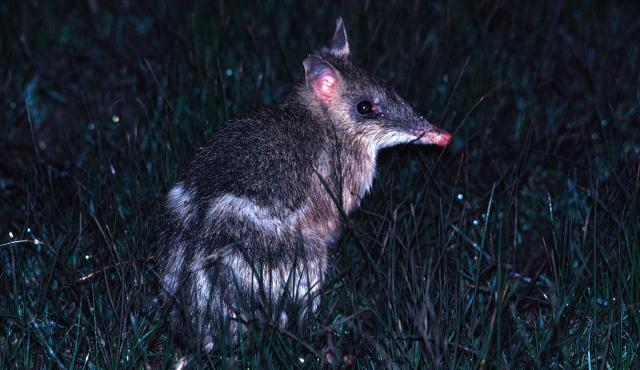



Eastern Barred Bandicoot (Mainland)
Perameles gunnii
| Details | |
|---|---|
| Type | Mammal |
| Group | |
| Other Common Names | Tasmanian Barred Bandicoot |
| Biology | Active at night. Can breed throughout the year, but mostly between July to November. Pregnancy lasts just 12 days, so they can produce up to five litters of young per year, with an average litter size of two. Can breed after 4 months of age. Average lifespan is 18 months to 2 years. Males need 13-20 hectares while females need 2-3 hectares. |
| Distinctive Markings | White stripes on rear of back, short white tail, long nose. |
| Taxonomy | |
|---|---|
| Phylum | Chordata |
| Class | Mammalia |
| Order | Peramelemorphia |
| Family | Peramelidae |
| Genus | Perameles |
| Species | gunnii |
Once widespread across western Victoria but now critically endangered in Victoria. Several captive breeding populations have been established.
| Interesting Facts | |
|---|---|
| Diet | Omnivore. Small invertebrates including worms, beetles, crickets, moths, cicadas and caterpillars. Plant bulbs and tubers including the Plains Yam Daisy, fruits and fungi. |
| Habitat | Natural habitat is tall, dense native grasslands and grassy woodlands, although they can live in modified habitats if there is suitable shelter and control of predators such as cats and foxes. |
| Native Status | Native to Australia. Once widespread across western Victoria. |